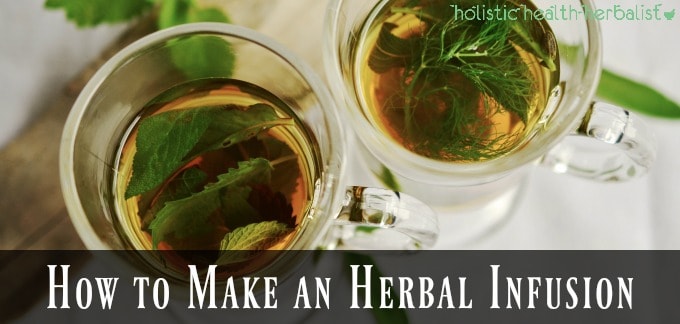
Since the beginnings of herbal medicine, cultures around the world have favored tisanes and decoctions as their predominant form of medicinal extraction. It has been only recently (the past 100 or so years) that herbal medicine, in the hopes up keeping up with Western pharmacology, began emphasizing the formulation and use of alcohol and glycerin solvent extracts.
Become an Herbal Infusion Expert and How to Make Them
While tinctures are all well and good, they lack the nutritional aspect of herbal medicine as the “inert” plant matter is removed. This inert matter is what houses valuable minerals that assist our body’s healing, restructuring and eliminating abilities.
Infusions, however, contain both the medicinal constituents as well as the nutritive and are therefore considered to be an effective form of healing. Not only are infusions useful as a form of medicine, they are also tonic, hydrating, and supply food and materials for healthy gut flora.
What is an Herbal Infusion?
Herbal infusions are essentially very strong teas, and are made by pouring either hot or cold water (sometimes vinegar, wine, juice, or a diluted glycerin) over plant matter and letting it steep for several hours. The steeping time will vary depending on the extractability of the chosen plant material.
• Herbs with a light structure such as leaves, flowers, soft stems, and some roots are best suited for infusion.
• Herb with lots of volatile oils like peppermint, valerian, chamomile, and ginger are also very suitable for infusion and should always be steeped in closed containers (I find that a small plate placed over my mug works well for this).
How to Prepare your Herbs for Infusion
The best way to infuse herbs is to create as much surface area as possible by cutting, bruising, or grinding to increase the permeability of the herb. You want to get all of the healing and nutritive qualities out of the herb that you possibly can, so don’t be afraid to mush them up for a better extraction.
Water Quality for Herbal Infusions
Using clean pure water is important when infusing herbs not only for flavor but quality. You never want to use tap water, hard water, or any water that produces mineral buildup…unless, of course, you like icky filmy herbal infusions.
I recommend using distilled water if fresh rainwater is not available.
Herbal Infusion Vessels
The preferred containers for making herbal infusions are going to be made from glass, earthenware, or porcelain. Using metal containers of any kind are unsuited for infusions especially when using herbs that are astringent, tannic, or contain gallic acid (witch hazel, oak bark, black teas). Doing so will create some really disgusting chemical reactions, so make sure that any containers with metal pieces used are made from non-reactive metal.
You can find a nice steeping vessel HERE.
Can you Store Herbal Infusions?
Ideally, herbal infusions should be consumed within a 12 hour period and should not be consumed after 24 hours. To keep your infusion fresh when you don’t plan on drinking them soon after they’re finished, simply keep them in the fridge in a clean, tightly closed mason jar.
The medicinal and nutritive qualities of herbal infusions will rapidly begin to deteriorate and decompose, so if you’re ever in doubt, throw it out!
Dosage for Herbal Infusions
Dosage depends on a few important factors:
• The type of herb(s) used
• The person drinking it (age, size, constitution)
• The condition (illness, deficiency, etc)
Typically, herbal infusions are taken in one cup increments 3 times a day. But this is a very generalized dosage. It largely depends on the condition of the person being treated. For example, if the person is bed sick, very weak, and is not able to get up in order to pass urine, drinking tons of herbal infusion is not recommended. Again, it just depends on the factors mentioned above.
How to Make a Hot Herbal Infusion
Generally, hot herbal infusions using dried plant material are made using a 1 to 20 ratio: 1 part herb and 20 parts boiling water. Steeping will work better if the herb is cut or ground.
• 1 oz (25 Gm) dried herb and 1 pint (500 ml) of boiling water
Hot herbal infusions using fresh plants use a 2 to 20 ratio: 2 parts herb to 20 parts boiling water.
• 2 oz (50 Gm) fresh herb and 1 pint (500 ml) of boiling water
There are some effective infusions that do not follow the above ratios like cayenne ( a pinch will do) and herbs will intense bitter flavors like dandelion.
1. Begin by boiling some distilled water
2. Place your herb into the steeping container (coffee press, teapot
, mason jar
etc.)
3. Pour the boiled water over the herb
4. Stir
5. Cover with a tight lid to prevent the volatile oils from escaping
6. Let steep for at least 30 min (I will steep some herbs overnight)
7. Strain and squeeze the herb in order to extract everything you can (some herbs can release a lot of infusion when squeezed)
8. Add a bit more water to make a full pint of infusion
Herbs Suitable for Hot Infusions Include:
• Chamomile
• Cleavers
• Dandelion
• Elderflower
• Elderberry
• Fennel
• Ginger root
• Ginkgo leaf
• Goldenseal leaf
• Hawthorn flower, leaf, and berry
• Milky Oat tops (great infused overnight)
• Mugwort
• Mullein leaf and flower
• Nettle (great infused overnight)
• Peppermint
• Plantain
• Red Clover
• Rosehips
• St. John’s Wort
• Scullcap
• Valerian
• Yarrow
• Yellowdock
*** All of these herbs can be taken at 1 cup 3 times per day
How to Make Cold Herbal Infusions
Cold infusions are made much the same way as hot infusions except that you steep them for much longer periods of time.
1. Put 1oz of herbs into your steeping container (it’s handy to put them in a reusable tea bag for easy removal)
2. Pour 1 pint of cold water over the herbs
3. Let steep overnight
4. Strain and squeeze the water from the herbs
5. Add more cold water to the infusion if needed to make 1 pint
Herbs Suitable for Cold Infusion Include:
• Burdock root
• Chamomile
• Cleavers
• Cramp bark
• Marshmallow root
• Mugwort
• Nettle
• Peppermint
• Uva Ursi
• Slippery elm
*** All of these herbs can be taken at 1 cup 3 times per day
What have been your favorite infusions?
For more herbal preparations check out the articles below:
How to Make an Herbal Infused Honey
How to Make Herbal Vinegar
How to Make an Herbal Decoction
How to Make an Herbal Hydrosol
How to Make Nourishing Herbal Infusions
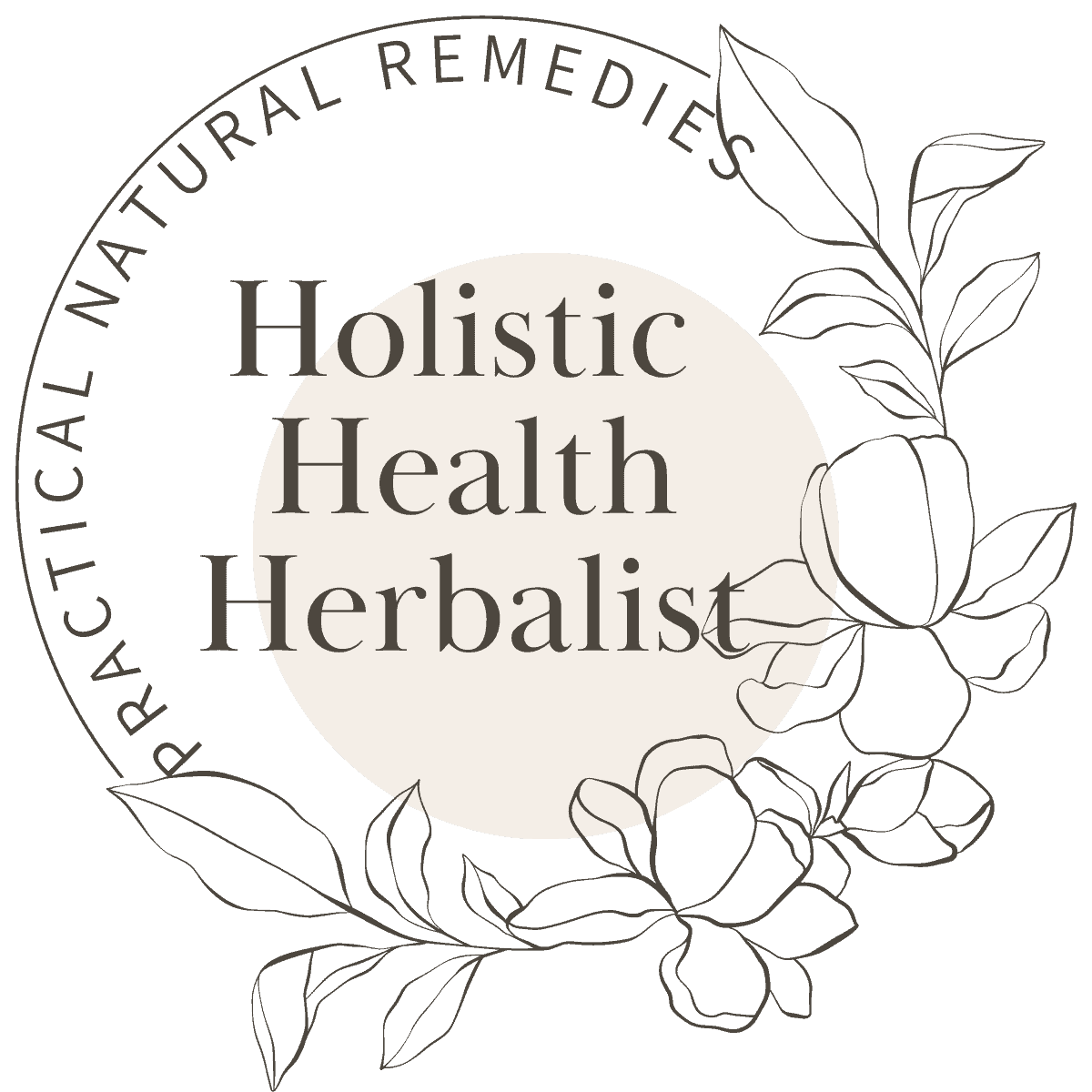

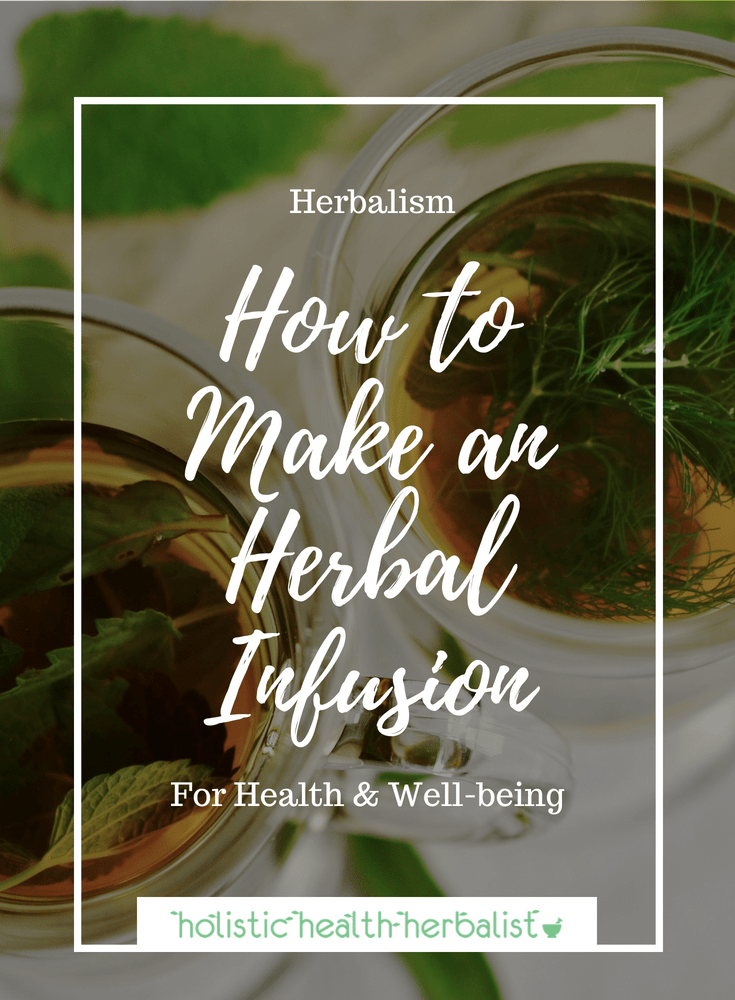

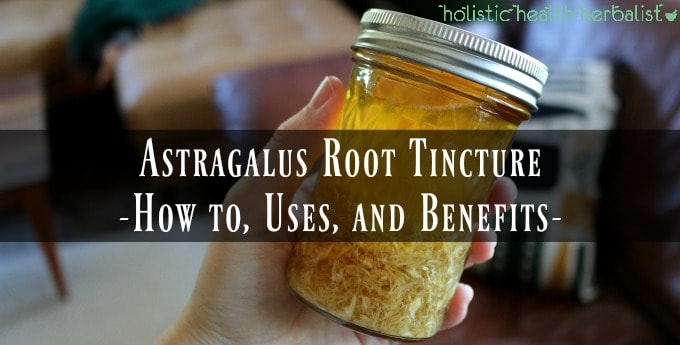
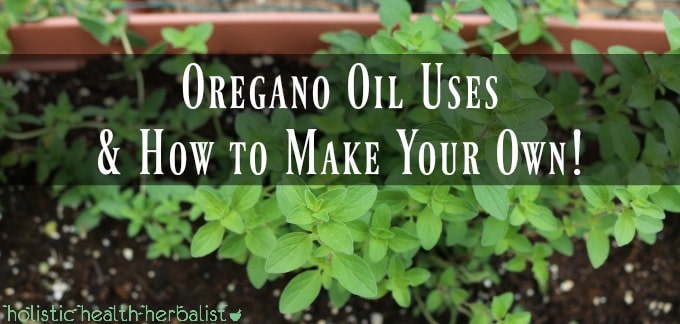

Julie Heinsen says
Hi Tash, thought I'd share what has worked for me.
HERBS & WATER
~Teas (for fresh or dried herbs):
Steep an arbitrary amount of an herb in an arbitrary amount of hot (not boiling) water for an arbitrary length of time. Strain & drink.
~"Medicinal Infusions"
Pour water just off the boil over dried herbs in a mason jar in the following proportions:
~Roots & Barks: 1 ounce of dried herb to a pint of water; steeped for 8 hours
~Leaves: 1 ounce of dried herb to a quart of water; steeped from 4 to 10 hours
~Flowers: 1 ounce of dried herb to a quart of water; steeped 20 minutes to 2 hours
~Seeds & Berries: 1 ounce of dried herb to a pint of water; steeped for 30 minutes
(if using fresh herbs, use 2 ounces)
Cap the jar while steeping, and be careful! The jars will get hot.
Medicinal Infusions can be made before bed and consumed throughout the next day, rather than making them in the morning and having to wait up to 10 hours to drink some.
~Decoctions (for dried or fresh roots, barks, berries or seeds):
For a more concentrated preparation, add 1 ounce of herbs to a quart of water. Slowly bring to a boil, and reduce volume to desired strength (traditionally by half). Strain, cool & drink.
~Cold Infusion
Some herbs extract better in cold water; those high in mucilage (Slippery Elm & Marshmallow) come to mind, though Calamus Root is another herb I find preferably prepared as a cold infusion, and Kava Kava is most often consumed today in the Polynesian Islands as such. In a piece of clean cheesecloth or muslin, suspend one ounce of, say, dried Slippery Elm Bark at the top of a quart sized mason jar a quart of cold water.at room temperature, overnight.
Squeeze out the wet herb into the tea in the morning, and if it's too thick for your tastes, add a bit of water to thin it out.
Let it be understood, though, that herbalists rarely weigh out the proportions... everybody eyeballs everything. And when you look at preparation info in a book, know that it'll be different if you look up the same thing in another book. Really, the only thing a measure out are tinctures, so I can be sure I'm dealing with a pretty much consistent preparation... this matters more with tinctures, especially if you're advising within the 5-10 drops dose range. But with water based stuff... don't sweat it. Maybe start with measurements to get an idea of what an ounce of roots look like in your hand, then just eyeball from there.
Tash says
WOW Julie! What a wonderful comment! Thanks for sharing! 😀 Will give these a try!